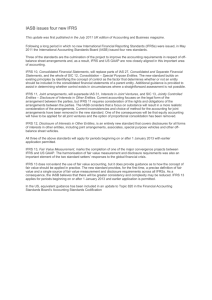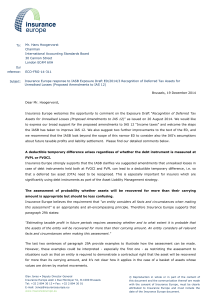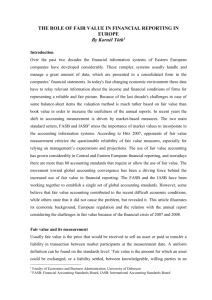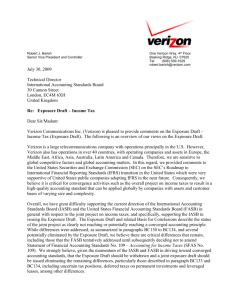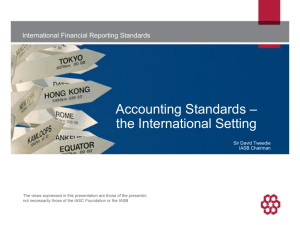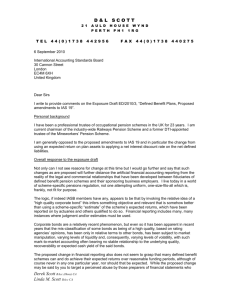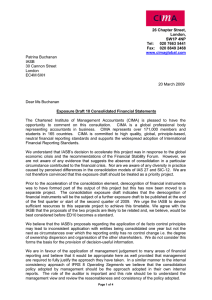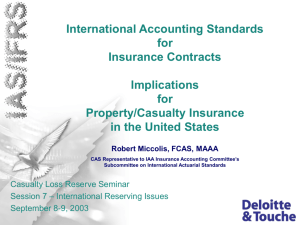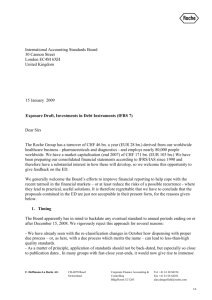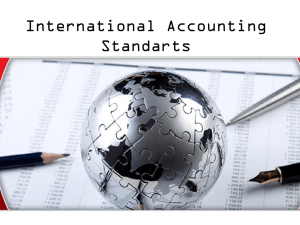IFRS 10 Consolidated Financial Statements replaces SIC
advertisement
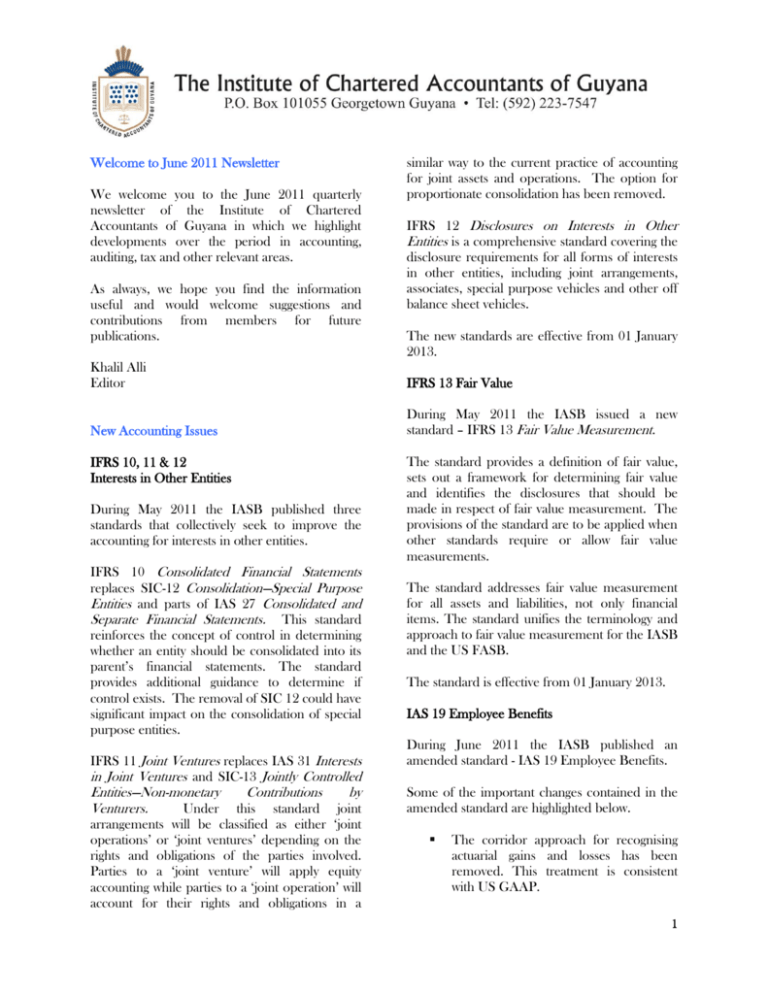
Welcome to June 2011 Newsletter We welcome you to the June 2011 quarterly newsletter of the Institute of Chartered Accountants of Guyana in which we highlight developments over the period in accounting, auditing, tax and other relevant areas. As always, we hope you find the information useful and would welcome suggestions and contributions from members for future publications. similar way to the current practice of accounting for joint assets and operations. The option for proportionate consolidation has been removed. IFRS 12 Disclosures on Interests in Other Entities is a comprehensive standard covering the disclosure requirements for all forms of interests in other entities, including joint arrangements, associates, special purpose vehicles and other off balance sheet vehicles. The new standards are effective from 01 January 2013. Khalil Alli Editor IFRS 13 Fair Value New Accounting Issues During May 2011 the IASB issued a new standard – IFRS 13 Fair Value Measurement. IFRS 10, 11 & 12 Interests in Other Entities During May 2011 the IASB published three standards that collectively seek to improve the accounting for interests in other entities. IFRS 10 Consolidated Financial Statements replaces SIC-12 Consolidation—Special Purpose Entities and parts of IAS 27 Consolidated and Separate Financial Statements. This standard reinforces the concept of control in determining whether an entity should be consolidated into its parent’s financial statements. The standard provides additional guidance to determine if control exists. The removal of SIC 12 could have significant impact on the consolidation of special purpose entities. IFRS 11 Joint Ventures replaces IAS 31 Interests in Joint Ventures and SIC-13 Jointly Controlled Entities—Non-monetary Venturers. Under Contributions by this standard joint arrangements will be classified as either ‘joint operations’ or ‘joint ventures’ depending on the rights and obligations of the parties involved. Parties to a ‘joint venture’ will apply equity accounting while parties to a ‘joint operation’ will account for their rights and obligations in a The standard provides a definition of fair value, sets out a framework for determining fair value and identifies the disclosures that should be made in respect of fair value measurement. The provisions of the standard are to be applied when other standards require or allow fair value measurements. The standard addresses fair value measurement for all assets and liabilities, not only financial items. The standard unifies the terminology and approach to fair value measurement for the IASB and the US FASB. The standard is effective from 01 January 2013. IAS 19 Employee Benefits During June 2011 the IASB published an amended standard - IAS 19 Employee Benefits. Some of the important changes contained in the amended standard are highlighted below. The corridor approach for recognising actuarial gains and losses has been removed. This treatment is consistent with US GAAP. 1 Actuarial gains and losses have been renamed ‘remeasurements’ and are to be recorded through the ‘Other Comprehensive Income’. Enhanced disclosures relating to defined benefit plans, including for multiemployer plans. The amended standard is effective from 01 January 2013. Revenue Recognition IAS 16 Classification of servicing equipment. IAS 32 Income tax consequences of distributions to equity holders. IAS 34 Interim financial reporting and segment information for total assets. The comment period is open until 21 October 2011. During June 2011 the IASB and the US FASB agreed to re-expose their revised proposals regarding revenue recognition. The re-exposure will take place during the third quarter of 2011. While a retroactive application is expected for adoption of the new revenue recognition provisions, the IASB also agreed to incorporate some transition relief to lessen the burden of adoption. Various ‘limited’ transition provisions are therefore included. The IASB also responded to concerns raised by the Telecoms sector and agreed that the revenue model should be applied consistently by all industries. Entities that follow industry specific guidance may therefore be impacted. New Education Issue IES 1 Entry Requirements During June 2011 the International Accounting Education Standards Board published an exposure draft of a revised standard on entry requirements to the accounting profession. The proposed IES 1 requires IFAC member bodies to specify entry requirements which should be high enough to ensure that the entrants have a reasonable chance of successful completion. The comment period is open until 21 September 2011 Upcoming Events Annual Improvements During June 2011 the IASB published an exposure draft containing amendments to five standards under the improvements project. The areas amended under each standard are shown below. IFRS 1 Treatment of borrowing costs on qualifying assets where commencement date is after date of transition to IFRS. IAS 1 Clarification of requirements comparative information. The ICAG will be hosting a week of professional development courses from 19 September to 23 September. Further information on topics and presenters will be circulated shortly but you are encouraged to book the dates. Editorial Information The information contained within this publication should not be relied upon as professional guidance. No responsibility for any person acting as a result of any material in this publication can be accepted by the Institute or the Editor. for Comments can be sent to the Institute at 47 Main Street, Georgetown. 2
